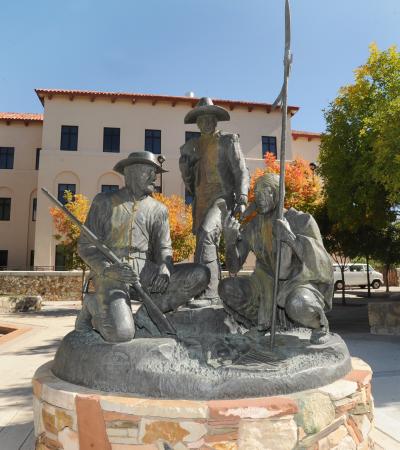'The Traders' get a makeover

Commissioned by the College of Business's Business Advisory Council, and completed in 1988 by Duke Sundt, a 1971 fine arts graduate of NMSU, the statue, titled "The Traders," depicts trade in New Mexico circa 1850.
The larger-than-life tri-cultural representation is portrayed by a Native American trader, a Hispanic vaquero and an Anglo mountain man all gathered around items of trade, such as knives and tomahawks.
Following 24 years of exposure to the rough Southern New Mexico climate, the condition of the statue has begun to decline. Fortunately, a group of around 10 NMSU art students led by Silvia Marinas-Feliner, director of the museum conservation program at NMSU, will restore the statue on the morning of Tuesday, Oct. 16.
"The idea of restoring this particular sculpture started because each semester I take my students for a walk on campus looking at the condition of outdoor public art," Marinas-Feliner said. "The Traders was a very sad case where the condition was bad ... the main problems are corrosion, bird droppings and graffiti."
Marinas-Feliner and her team will address the problems and protect the bronze sculpture with a "sacrificial" layer, which will isolate the metal from the environment and deteriorate before the sculpture.
This will be the first time any conservation work has been done to The Traders, so it will need a complete cleaning and corrosion treatment before the application of the protective layer, which will be replaced by Marinas-Feliner and her students every year.
"My students have to learn in the fall about metal restoration, so this will be part of their training," Marinas-Feliner said. "I like it because both parties win from this: my students gain experience on how to restore outdoor public art and the community gets their public art on display maintained and restored."
Besides teaching art conservation, Marinas-Feliner and her team of students have also restored the "Bataan Death March Memorial" at Veteran's Memorial Park for the past five years.


